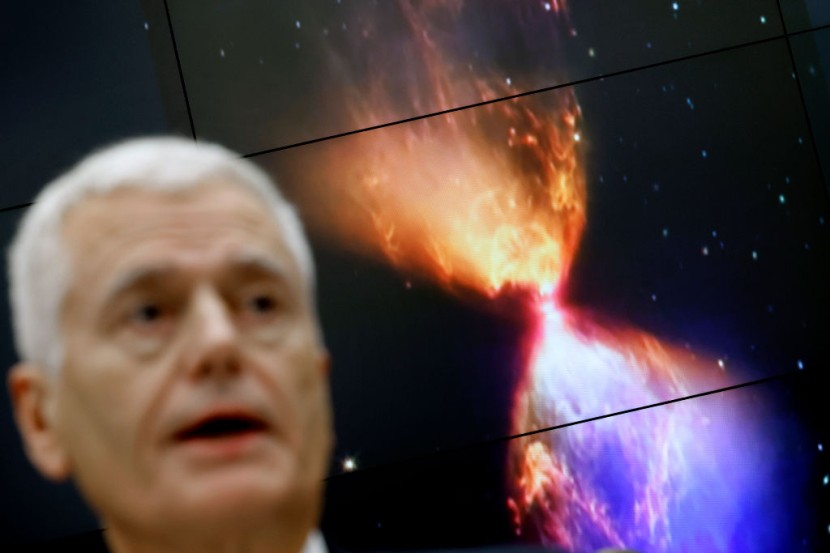
A new image of a protostar, an object huge enough to become a star but which has not yet begun the process of nuclear fusion, has been captured by the James Webb Space Telescope (JWST), showing features never before seen.
The protostar is located in a distant galaxy, around 450 light-years away. It is located in the Taurus star-forming zone, enclosed by the L1527 black cloud of gas and dust.
Compared to our sun's age, which is around 4.6 billion years, the newly discovered protostar is a young object in the universe. Only 100,000 years old, it's still puffy and uneven in the earliest stage of star formation per James Webb Telescope Photo.
Stunning Image of a Baby Star
It will eventually become a full-fledged star after compressing more under its gravity for the following several million years.
The JWST image shows the protostar is veiled behind a disc of dust and gas from which it will feed as it expands and may create a planet system, as reported by the New Scientist.
The protoplanetary disc, around the size of our solar system, forms the straight "neck" of the hourglass shape, while light from the newborn star fills up the upper and lower portions seen in the James Webb Telescope image.
Countdown to a new star ⏳
— NASA Webb Telescope (@NASAWebb) November 16, 2022
Hidden in the neck of this “hourglass” of light are the very beginnings of a new star — a protostar. The clouds of dust and gas within this region are only visible in infrared light, the wavelengths that Webb specializes in: https://t.co/DtazblATMW pic.twitter.com/aGEEBO9BB8
That light is infrared, so it's not visible even up close, yet it fits JWST's wavelength range. The formation of stars and entire planetary systems may be comprehended via the study of this and similar objects.
In the James Webb Telescope Photo, the protostar's outflows are creating voids in the surrounding matter, which are outlined by the blue and orange clouds in this representative color infrared picture.
Due to dust layers between Webb and the clouds, several hues are seen. There is less dust in the blue regions and when dust accumulates, less blue light can escape, turning certain areas orange.
Webb also depicts shocked molecular hydrogen filaments being ejected from the protostar. New stars would normally develop throughout the cloud, but shocks and turbulence prevent this.
What Is Happening in the Photo?
Because of this, the protostar becomes extremely powerful and absorbs a great deal of the surrounding matter. L1527 lacks a necessary feature of stars, nuclear fusion of hydrogen, hence it must constantly draw energy from outside sources.
NASA says that as the protostar gains mass, the core of the star gets smaller and closer to nuclear fusion, as the image shows L1527 doing. Dust and gas from the encircling molecular cloud are pulled to the protostar's core. Material swirls as it falls in. This forms an infalling matter that feeds the protostar. As it develops mass and compresses, its core temperature goes up, triggering nuclear fusion.
While generally spherical in the James Webb Telescope image, its instability means that it is more like a tiny, hot, puffy clump of gas that is between 20% and 40% of the mass of our sun.
A fundamental feature of stars, the nuclear fusion of hydrogen, has not yet begun in the protostar. Its form, that of a swollen ball of hot gas containing between 20% and 40% of the mass of our sun, is equally precarious, according to Space.com.
The picture puts the birth of our sun and solar system into perspective. The James Webb Telescope, a multinational collaboration involving NASA, the European Space Agency, and the Canadian Space Agency, began broadcasting its latest astronomical findings back in July, per CNN.
© 2025 HNGN, All rights reserved. Do not reproduce without permission.








